Occupational Safety Training in Flashlight Manufacturing
99,000 ₫
Note: The above price is calculated for one person, the price may fluctuate depending on the number of trainees participating in the course and depending on market movements. For more accurate pricing support, please refer to the quotation table or contact our consulting staff directly.
Occupational safety is an important issue in flashlight manufacturing factories and needs to be addressed promptly to ensure the health and safety of workers, and to enhance the reputation of businesses. The Occupational safety training course is one of the effective solutions to raise awareness about accident prevention for workers participating in flashlight manufacturing.
Table of Contents
Toggle1. Overview of Flashlights
a. What is a flashlight?
A flashlight is a type of light that uses batteries to provide power. It is commonly used for outdoor activities, in places without fixed electricity, or when illumination is needed in low-light conditions.
Common flashlights are usually compact, portable, and made from various materials such as metal, plastic, or rubber. Flashlights may also come with additional features such as adjustable brightness, water resistance, strobe mode, or USB charging ports.

b. Machinery used in flashlight manufacturing
The machinery involved in the flashlight manufacturing process includes:
- Battery manufacturing machines: machines used to produce batteries from chemical materials such as carbon, zinc, acid, ammonium, and graphite.
- Battery lead cutting and bending machines: machines used to cut and bend battery leads for assembly into flashlights.
- Battery casing machines: machines used to enclose the batteries in protective casings.
- Flashlight packaging machines: machines used to package batteries and store them in protective packaging.
- Battery testing machines: machines used to test flashlight quality, including voltage, current, capacity, and usage time.
- Battery charging machines: machines used to fully charge batteries before use.

c. Flashlight manufacturers in Vietnam
In Vietnam, there are several well-known flashlight brands, including:
- Lummi Flashlights: a famous Vietnamese brand, produced by Lummi Vietnam Co., Ltd.
- Thien Long Flashlights: a reputable flashlight brand in Vietnam, manufactured by Thien Long Joint Stock Company.
- LedSun Flashlights: a quality flashlight brand, produced by Quang Minh Co., Ltd.
- Dien Quang Flashlights: one of the oldest flashlight brands in Vietnam, produced by Dien Quang Joint Stock Company.
- Kangaroo Flashlights: a well-known Vietnamese flashlight brand, produced by Kangaroo Co., Ltd.
d. Specific jobs in a flashlight manufacturing factory
Group 1
- Executive director, deputy executive director, department heads in the flashlight manufacturing factory.
Group 2
- Safety officers: manage safety in the factory, design safety procedures, supervise, and ensure employees follow safe working processes.
Group 3
- Material and component procurement: factories purchase the necessary materials and components for flashlight manufacturing, including batteries, bulbs, circuits, flashlight cases, and other parts.
- Manufacturing: flashlight factories usually use automated equipment to manufacture flashlights following standardized procedures. Mnufacturing steps may include component processing, assembly, quality checks, performance testing, and product packaging.
- Quality inspection: to ensure product quality, factories typically test flashlights for brightness, light intensity, battery life, and other standards.
Group 4
- Office, service, sales, and marketing tasks.
- Manufacturing management, quality management, human resources management, materials management, financial and accounting management.
- Research and product development: includes creating new flashlight models and improving features of existing models to meet market demand.
- Design and prototype fabrication: after conceptualizing a new flashlight model, engineers and designers create detailed designs, technical drawings, and produce a prototype for testing and evaluation.

2. Overview of occupational safety training for flashlight manufacturing
In this article, we focus on issues related to Group 3, because Group 3 directly participates in the manufacturing process and faces the highest occupational safety risks. Refer to other groups here.
a. What is Group 3 occupational safety training?
- Group 3 occupational safety training consists of sessions that equip workers with awareness and methods to prevent workplace accidents.
- The training course helps workers identify and avoid hazards, reducing the risks of workplace accidents during their tasks.
REGISTER FOR OCCUPATIONAL SAFETY TRAINING SERVICES
b. Training duration
Initial occupational safety training
- Total training duration is at least 24 hours, including exam time.
- 8 hours of theory on safety and labor hygiene policies and regulations
- 8 hours of theory on basic occupational safety and hygiene knowledge
- 4 hours of theory on specialized training content
- 2 hours of practice on specialized training content
- 2 hours of theoretical exam at the end of the course
The safety training center will distribute the training sessions according to the worker schedule. Typically, there are 6 sessions over 3 days, provided the company arranges continuous learning time.
Periodic occupational safety training
- Before the occupational safety card expires, workers who wish to renew must undergo periodic occupational safety training, with periodic training duration at least 50% of the initial training duration.
Explanation: the total periodic occupational safety training duration is at least 12 hours, including exam time. After completing the periodic training and passing the test, the worker will be reissued or have their occupational safety card renewed.
c. Training course content
| No. | TRAINING CONTENT | TRAINING TIME (HOURS) | |||
| Total | Including | ||||
| Theory | Practice | Exam | |||
| I | Safety and labor hygiene policies and regulations | 8 | 8 | 0 | 0 |
| 1 | Overview of the legal document system on occupational safety and hygiene. | 6 | 6 | ||
| 2 | System of standards and technical regulations on occupational safety and hygiene. | 1 | 1 | ||
| 3 | Specific regulations from state management agencies on safety and hygiene when constructing, expanding, or renovating facilities; producing, using, storing, and inspecting machines, equipment, materials, and substances with strict safety and hygiene requirements. | 1 | 1 | ||
| II | Basic knowledge of occupational safety and hygiene | 8 | 8 | 0 | 0 |
| 1 | Basic knowledge of hazardous and harmful factors in the workplace. | 4 | 4 | ||
| 2 | Methods to improve working conditions. | 1 | 1 | ||
| 3 | Safety culture in manufacturing and business. | 1 | 1 | ||
| 4 | Rights and obligations of employers and employees; policies on occupational safety and hygiene for employees; functions and duties of the safety network. | 1 | 1 | ||
| 5 | Occupational safety and hygiene regulations, safety signs, instructions, use of safety equipment and personal protective equipment; first aid skills for workplace accidents; occupational disease prevention. | 1 | 1 | ||
| III | Specialized training content | 6 | 4 | 2 | 0 |
| Comprehensive knowledge about machines, equipment, substances generating hazardous factors; risk analysis, assessment, and management in occupational safety; safe working procedures with machines, equipment, and substances with strict safety requirements. | 6 | 4 | 2 | ||
| IV | Final occupational safety training assessment | 2 | 2 | 0 | 0 |
| Total | 24 | 22 | 2 | ||
See more training content of all 6 groups
d. Occupational safety card
After completing the occupational safety training and passing the exam, workers will be issued an occupational safety card (commonly called a Group 3 occupational safety certificate).
The Group 3 safety card clearly displays information such as name, date of birth, job, and specific working environment. It also includes training duration, official stamp, and signature confirming course completion.
According to regulations stated in Clause 2 of Article 24, Decree 44/2016/ND-CP, there are 2 cases:
- If the employer and employee have a labor contract, the employer must sign, stamp, and endorse the safety card for the trained Group 3 employee after completing the training course and passing the exam.
- If the worker is freelance or temporary, without a labor contract, the training unit must sign, stamp, and endorse the safety card after the worker completes the training and passes the exam.

3. Identifying Hazards Affecting Workers in Flashlight Manufacturing
The process of producing flashlights also involves certain hazards that may affect the health and safety of workers, including:
- Chemical hazards: Using chemicals during flashlight manufacturing may harm workers’ health. For example, using solvents to clean components during manufacturing can be hazardous if not used properly.
- Electrical hazards: Flashlights are electrical products, so working with electricity can cause accidents if safety is not ensured during manufacturing.
- Mechanical hazards: Equipment and machinery in flashlight manufacturing can pose risks to workers’ health and safety if not used correctly.
- Temperature hazards: Using machinery and equipment during manufacturing may generate high temperatures, posing risks to workers’ health and safety.
- Noise hazards: Machinery in flashlight manufacturing can create noise, which can harm workers’ health if not properly controlled.
- Light hazards: The manufacturing process may generate intense light, which can damage workers’ eyesight if safety precautions are not followed.
4. Common Workplace Accidents in Flashlight Manufacturing
Common workplace accidents in flashlight manufacturing include:
- Sparks and explosions: Using chemicals to generate electricity in batteries can cause sparks and explosions, which may lead to fire and injuries.
- Eye injuries: Lasers used for cutting and welding flashlight components can cause eye injuries if proper protection is not used.
- Chemical poisoning: Flashlight manufacturing requires chemicals like acids and alkalis to create components. Excessive exposure may cause serious health problems for workers.
- Physical injuries: Handling machinery and equipment can cause accidents such as crushing, cuts, or injuries from collisions.

5. Safety Measures for Participating in Flashlight Manufacturing
Safety measures for participating in flashlight manufacturing include:
- Ensure full personal protective equipment (PPE): Manufacturing staff must be equipped with helmets, safety glasses, gloves, safety shoes, masks, etc.
- Occupational safety training: Staff must be trained on safe working procedures, proper use of PPE, correct handling of manufacturing equipment, and accident prevention methods.
- Control raw materials and product quality: Ensure input materials are quality-checked to avoid manufacturing issues and verify final product safety standards.
- Regular maintenance and cleaning of machinery: Ensure machinery is maintained, repaired, and cleaned regularly to prevent accidents.
- Organize a safe workspace: Ensure proper ventilation, adequate lighting, and a clean, organized working environment.
- Implement inspection and quality monitoring: Regularly check and monitor product quality to ensure compliance with safety standards.
- Encourage participation and sharing of safety information: Promote communication among staff to increase safety awareness and reduce accident risks.
- Periodically conduct occupational environment monitoring in factories to collect and analyze hazardous factors, adjusting and reducing risks to prevent occupational diseases.
6. Benefits of Occupational Safety Training in Flashlight Manufacturing
An Toan Nam Viet provides businesses with the following benefits after completing occupational safety training courses under Decree 44/2016/ND – CP on occupational safety and hygiene:
- Workers can identify potential accident hazards and take preventive measures to avoid workplace accidents.
- Businesses can establish risk prevention measures in manufacturing, operation, and maintenance processes.
- Minimizes costs associated with workplace safety incidents.
- Uninterrupted manufacturing increases labor productivity and product quality.
- Compliance with occupational safety laws, avoiding legal risks.
- Enhances company credibility and professionalism, boosting brand reputation.
Nam Viet’s training courses are a solution to prevent external hazards, helping individuals avoid dangers that could lead to injury or even death.
REGISTER FOR OCCUPATIONAL SAFETY TRAINING SERVICE
7. Customer Feedback After Completing Flashlight Manufacturing Safety Training
An Toan Nam Viet has many years of experience supporting businesses across Vietnam, especially in the southern provinces. This responsibility is invaluable, which is why our occupational safety training has become increasingly professional. Our growth is fueled by positive feedback and suggestions from businesses. Below are testimonials from partners we have served.
See more customer interviews after using services from An Toan Nam Viet
8. Occupational Safety Training Capacity of An Toan Nam Viet
An Toan Nam Viet is a reputable and high-quality occupational safety training center in Vietnam. Training sessions are conducted continuously at manufacturing workshops, factories, or construction sites across the country (all 63 provinces of Vietnam).
REGISTER FOR OCCUPATIONAL SAFETY TRAINING SERVICE
Occupational safety training license
- An Toan Nam Viet has been inspected and granted a certificate of eligibility by the Department of Safety under the Ministry of Labor – Invalids and Social Affairs, confirming our eligibility to operate occupational safety and hygiene training. This strengthens our occupational safety training capabilities.

Training materials and lectures
- Before being used in occupational safety training courses, materials are reviewed to ensure accuracy and effectiveness in knowledge transfer.
- Instructors follow teaching methods standardized by An Toan Nam Viet, developed by experts in occupational safety and hygiene training to maximize learning efficiency for trainees.
Facilities
- Controlling classroom factors improves teaching performance and knowledge retention.
- Our training facilities offer spacious classrooms meeting standards for area, lighting, and training equipment.
9. Nationwide Reputable Occupational Safety Training Center
At An Toan Nam Viet, we prioritize professional dedication in occupational safety training. We aim to equip workers with self-protection knowledge to ensure their safety while contributing to national development.
To ensure effective training, we meticulously prepare every detail, from tools, teaching equipment, curricula, documents, audio, to lighting.
Our occupational safety trainers are experts with years of experience. They have also conducted research identifying hazards across all industries and preventive methods.
Lectures are based on practical experience and delivered vividly and clearly, ensuring comfortable learning and effective knowledge retention. All content aligns with Decree 44/2016/ND-CP.
Trainees gain hazard prevention measures and learn how to protect themselves, applying knowledge effectively in real work situations.
Our training center is proud to offer reputable, professional occupational safety training with the following advantages:
- Competitive training costs while ensuring quality.
- Flexible training schedule aligned with company manufacturing.
- Quick certification procedures compliant with law.
- Experienced instructors with long-term professional expertise.
- Classrooms optimized for learning efficiency and knowledge retention.
- Lectures tailored to the occupational safety needs of businesses.
- Dedicated and professional service supporting clients accurately and promptly.

10. Additional References for Flashlight Manufacturing Occupational Safety Training
- Flashlight Manufacturing Occupational Safety Materials
- Occupational Safety Training Material Set
- Occupational Safety Training Test Set
- Flashlight Manufacturing Occupational Safety Training Curriculum
- Flashlight Manufacturing Occupational Safety Multiple-Choice Test
1 review for Occupational Safety Training in Flashlight Manufacturing
No comments yet

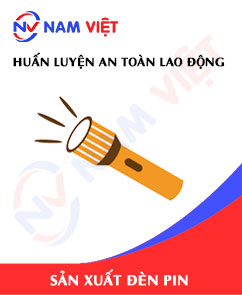
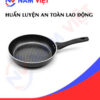
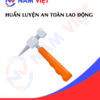








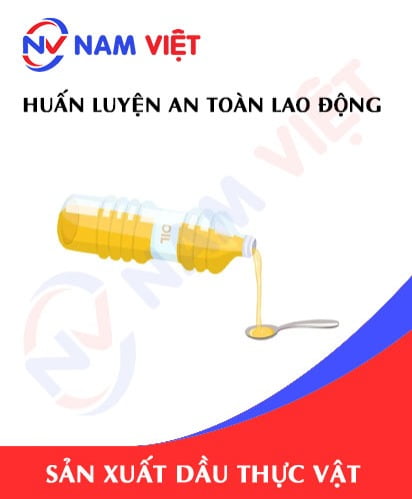

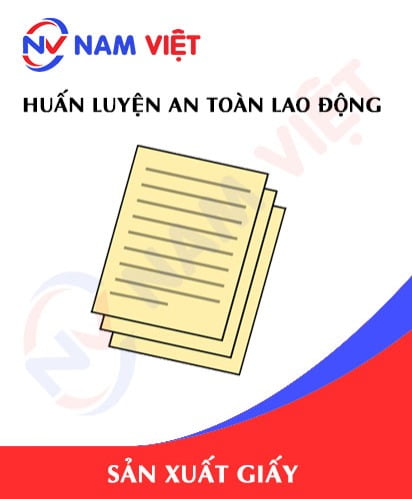
namchinh.haiphong341
Dịch vụ lắm nhé! tôi rất hài lòng với cách làm việc của trung tâm